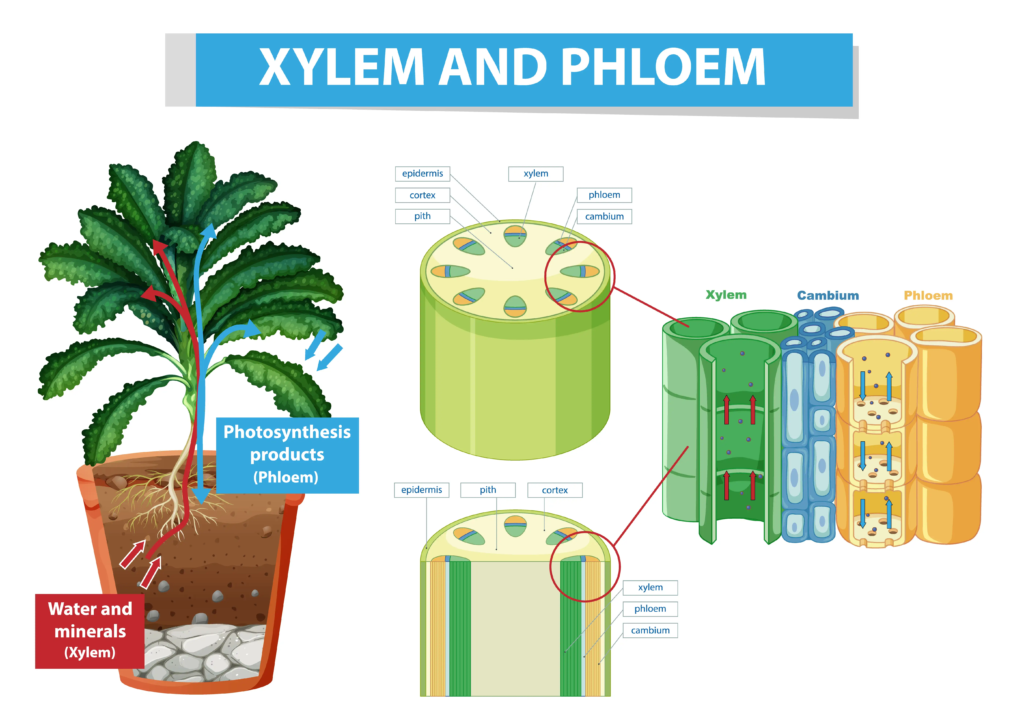Introduction
Plants are divided into two major groups based on the presence or absence of vascular tissue. Vascular plants have specialized xylem and phloem tissue for the transport of water, minerals and food. Nonvascular plants lack these specialized vascular tissues and have simpler systems for transport. Though both are photosynthetic plants, vascular and nonvascular plants have key differences in their structure and function.
Definition of Vascular Plants
Vascular plants, also known as tracheophytes, are plants that have lignified tissues for conducting substances throughout the plant body. The vascular tissue consists of:
Characteristics
- Xylem: transports water and dissolved minerals from roots to leaves
- Phloem: transports prepared food from leaves to other plant parts
- Provide mechanical strength and support due to lignified walls

Vascular plants possess true stems, leaves, roots and specialized transport cells. They exhibit a dominant sporophyte generation in their life cycle. Vascular plants represent the majority of vegetation on earth and include ferns, gymnosperms and flowering plants.
Examples
- Ferns
- Conifers
- Cycads
- Ginkgo
- Angiosperms
Definition of Nonvascular Plants
Nonvascular plants, also known as bryophytes, are small plants that lack specialized conducting tissues. They include:
Characteristics
- Liverworts
- Mosses
- Hornworts

They do not have true roots, stems or leaves. Rhizoids act as anchors. Transport of materials occurs by diffusion. The dominant generation is the gametophyte. They thrive in damp habitats.
Examples
- Peat moss
- Rock moss
- Marchantia
Key Differences
| Basis | Vascular Plants | Nonvascular Plants |
|---|---|---|
| Vascular Tissue | Present | Absent |
| Size | Often large plants | Small, microscopic plants |
| Roots | Have true roots | Possess rhizoids instead of roots |
| Stems | Have specialized stems | Lack true stems |
| Leaves | Have specialized leaves | Lack of leaves but have phyllids |
| Reproduction | Dominant sporophyte | Dominant gametophyte |
| Habitat | Can thrive in various conditions | Found in damp, humid environments |
Similarities Between Vascular and Nonvascular Plants
- Both are photosynthetic plants
- Exhibit alternation of generations in life cycle
- Capable of asexual reproduction
Frequently Asked Questions
What are the main types of vascular plants?
The major vascular plants are seedless vascular plants like ferns and lycophyta’s, gymnosperms like cycads and conifers, and angiosperms or flowering plants.
How do vascular plants transport water?
Vascular plants use xylem tissue to transport water from roots by capillary action and transpiration pull. Water moves through vessels and tracheids in one direction from roots upwards.
What are the limitations of nonvascular plants?
Nonvascular plants cannot grow tall or live in dry habitats, as they lack specialized systems for transport. Diffusion limits nonvascular plants to small sizes.
Do nonvascular plants have roots?
No, nonvascular plants have hair-like rhizoids rather than true roots for anchorage. Rhizoids do not transport water and minerals like roots in vascular plants.
Why are ferns classified as vascular plants?
Ferns have xylem and phloem tissues for transport, so they are vascular plants. Their sporophyte generation is dominant over the gametophyte, as seen in vascular plants.
